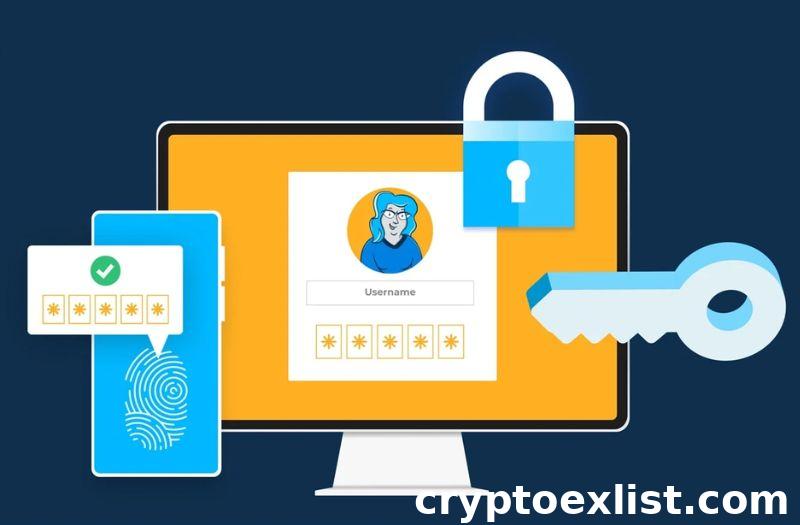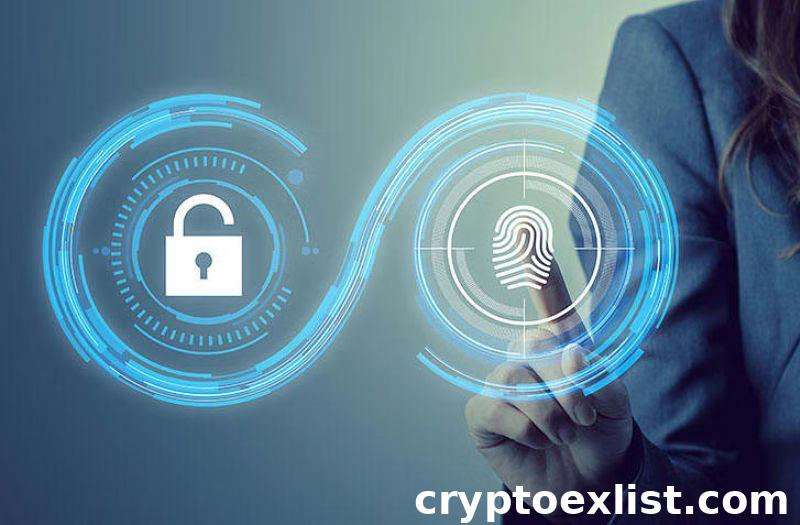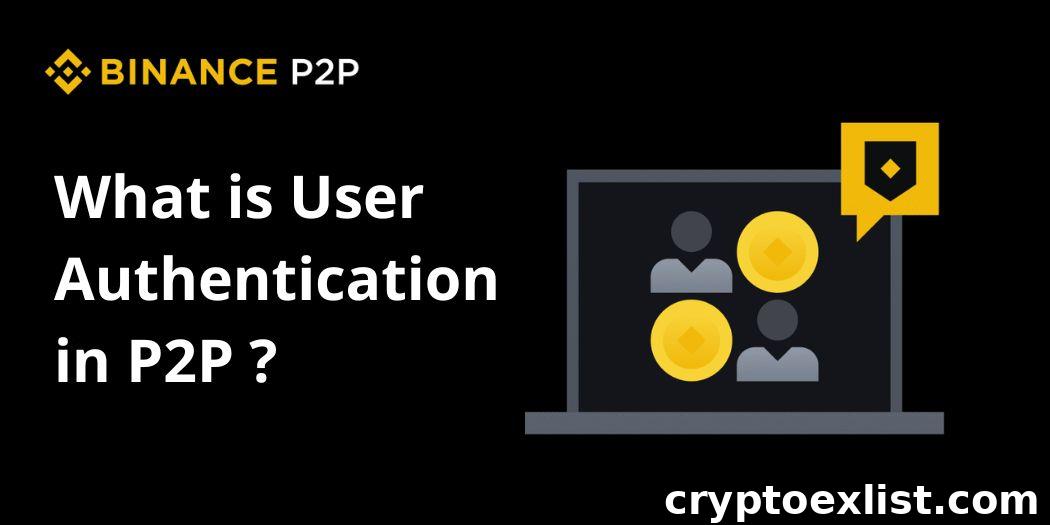
User authentication plays a crucial role in ensuring security, trust, and transparency in Peer-to-Peer (P2P) transactions on platforms like Binance. For beginners exploring P2P trading, understanding how authentication works is essential to protect your account and prevent fraud. This guide covers everything from the basics of user authentication, its importance in digital transactions, common authentication methods, and best practices for safeguarding your account. Whether you’re a newcomer or a seasoned trader, these insights will help you navigate P2P trading with confidence.
Understanding User Authentication
When it comes to Peer-to-Peer (P2P) trading, user authentication plays a crucial role in ensuring a secure and trustworthy trading environment. On platforms like Binance P2P, user authentication helps verify the identities of traders, providing a layer of security that protects both buyers and sellers from fraudulent activities. For newcomers to P2P trading, understanding how user authentication works and why it’s important can help you trade confidently and safely.
Definition of User Authentication
User authentication is the process of verifying the identity of a user before granting access to a system or service. In the context of P2P trading on Binance, authentication involves ensuring that both the buyer and seller are legitimate users who have completed the necessary identity verification (KYC) steps. This process not only confirms the user’s identity but also ensures they comply with regulatory requirements. By verifying users through authentication, Binance reduces the risk of scams and fraud, creating a safer environment for all traders.
Types of User Authentication Methods
There are several types of user authentication methods used in P2P trading to ensure the security of transactions. The most common method is password-based authentication, where users log in with a unique username and password. However, more advanced methods like Two-Factor Authentication (2FA) are widely recommended for added security. 2FA requires users to provide two forms of identification—such as a password and a one-time code sent to their phone or generated through an app—before accessing their account. Biometric authentication, including fingerprint or facial recognition, is another increasingly popular option, adding another layer of protection to user accounts. By combining multiple authentication methods, Binance ensures that only verified and authorized users can participate in P2P trades.
Importance of User Authentication in Digital Transactions
User authentication is vital for the security and integrity of digital transactions, especially in the world of cryptocurrency trading. In P2P transactions, where individuals are directly trading with one another, authentication helps build trust between users. It minimizes the risk of fraudulent activities, such as identity theft or unauthorized access to accounts. Additionally, authentication ensures that trades comply with legal and regulatory frameworks, keeping users safe from potential legal issues. For newbies entering the P2P trading space, having robust user authentication mechanisms in place not only protects your assets but also provides peace of mind when engaging with other traders on platforms like Binance.

The Role of User Authentication in P2P Transactions
User authentication plays a pivotal role in ensuring that Peer-to-Peer (P2P) transactions are secure, trustworthy, and efficient. In P2P trading, users engage directly with one another to buy or sell cryptocurrency, making it essential that both parties are verified and authenticated. Platforms like Binance rely on robust user authentication processes to protect users from potential risks. For those new to P2P trading, understanding the role of user authentication can greatly improve your trading experience and safety.
Enhancing Security
The primary function of user authentication in P2P transactions is to enhance the overall security of the trading environment. When users log in to Binance P2P, they are required to authenticate their identity using secure methods like passwords, Two-Factor Authentication (2FA), and even biometric verification in some cases. This ensures that only authorized users can access their accounts and conduct trades. By implementing these security measures, Binance significantly reduces the risk of unauthorized access and potential breaches. For new traders, this extra layer of protection means you can trade with confidence, knowing your account and assets are secure from potential threats.
Building Trust Between Users
Trust is essential in P2P trading, especially when transactions occur directly between users rather than through a centralized exchange. User authentication helps build trust by verifying the identity of both buyers and sellers. When traders can see that their counterparty has completed the necessary Know Your Customer (KYC) procedures and passed the platform’s verification checks, it creates a sense of reliability and transparency. This is particularly important for new users who may be wary of interacting with strangers. With authenticated users, Binance ensures that the marketplace is made up of legitimate participants, fostering a community where trust is prioritized.
Preventing Fraud and Scams
One of the biggest concerns for anyone involved in P2P trading is the risk of fraud and scams. Without proper authentication, it’s possible for malicious actors to pose as legitimate traders, leading to fraudulent activities such as fake payments, identity theft, or account takeovers. Binance’s authentication processes are designed to prevent these risks by verifying user identities and monitoring for suspicious activities. With secure authentication in place, it becomes much more difficult for scammers to operate on the platform. For newbies, this means you can engage in P2P trades with peace of mind, knowing that Binance’s authentication system is working to protect you from fraudsters.

Common User Authentication Methods in P2P Transactions
User authentication is an essential part of securing Peer-to-Peer (P2P) trading, ensuring that only legitimate users can participate in transactions. For new traders on Binance P2P, it’s important to understand the various authentication methods that can be used to protect your account and ensure a safe trading environment. From passwords to biometric verification, these methods are designed to enhance security and minimize the risk of fraud.
Password-Based Authentication
The most basic and widely used form of user authentication in P2P transactions is password-based authentication. When you create a Binance account, you are prompted to set a strong password to protect your account. A good password should be complex, using a combination of uppercase and lowercase letters, numbers, and special characters. While passwords are an essential first step in securing your account, they can be vulnerable if they are not strong enough or if the same password is used across multiple platforms. For new users, it’s crucial to create a unique and secure password to ensure that unauthorized users can’t easily access your account.
Two-Factor Authentication (2FA)
Two-Factor Authentication (2FA) adds an extra layer of security to P2P transactions by requiring users to provide two forms of identification before accessing their account or completing a trade. In addition to your password, 2FA usually involves entering a one-time code sent to your mobile device via SMS or generated by an authentication app like Google Authenticator. Binance strongly encourages users to enable 2FA, as it significantly reduces the risk of unauthorized access even if your password is compromised. For newbies, enabling 2FA is a simple yet powerful way to enhance account security and protect your assets.
Biometric Authentication
Biometric authentication is becoming an increasingly popular method for securing P2P transactions. This type of authentication uses physical characteristics like fingerprints or facial recognition to verify a user’s identity. Many modern smartphones and devices support biometric login, allowing users to access their Binance account with a simple touch or glance. Biometric authentication provides a convenient and highly secure way to verify your identity, as it’s nearly impossible for someone else to replicate your unique physical traits. For new traders, enabling biometric authentication can provide both ease of use and enhanced security.
Social Media Authentication
Some platforms, including Binance, offer social media authentication as a way to streamline the sign-up and login process. Social media authentication allows users to log in using their Facebook, Google, or other social media accounts. While convenient, this method may not provide the same level of security as password-based or biometric authentication, as social media accounts can sometimes be compromised. However, for users who prefer convenience, social media authentication can be an option. If you choose this method, it’s important to ensure that your social media account is also secured with strong passwords and 2FA.
How User Authentication Works in P2P Transactions
User authentication is a critical component of securing Peer-to-Peer (P2P) trading transactions, ensuring that both buyers and sellers on platforms like Binance are legitimate and trustworthy. For beginners, understanding how the authentication process works—beginning with user registration, identity verification, and session management—will help ensure a safe and smooth trading experience. Here’s a breakdown of the key steps involved in user authentication in P2P transactions.
User Registration Process
The first step in user authentication for P2P trading begins with the registration process. When you sign up on a platform like Binance, you’ll be asked to provide basic information such as your email address or phone number and set a secure password. During this process, the platform sends a verification link or code to your provided email or phone to ensure that the contact information is valid and belongs to you. This is a crucial first step in securing your account. For new users, it’s important to choose a strong password that combines letters, numbers, and special characters to prevent unauthorized access to your account.
Verifying User Identity
After registering, users typically need to verify their identity through a process known as Know Your Customer (KYC). This involves providing personal identification documents such as a passport, driver’s license, or government-issued ID. On Binance P2P, KYC ensures that all users are genuine, reducing the risk of fraud and illegal activities. The verification process may also include facial recognition or selfie submission to confirm that the documents provided match the user’s identity. For beginners, completing this verification process allows you to unlock full access to P2P trading features and provides added protection when dealing with other traders, as it increases transparency and accountability.
Session Management and Tokenization
Once a user is authenticated, platforms like Binance use session management and tokenization to maintain the security of the user’s session while trading. After logging in, users are given a session token, which acts as a secure identifier, allowing them to interact with the platform without needing to continuously re-enter their credentials. These tokens are encrypted, ensuring that even if intercepted, they cannot be used by unauthorized individuals. For added security, session tokens often expire after a certain period of inactivity, prompting the user to re-authenticate. This system ensures that only active, verified users can participate in P2P transactions, minimizing the risk of session hijacking or unauthorized access.

Risks Associated with Inadequate User Authentication
In Peer-to-Peer (P2P) trading, robust user authentication is essential for ensuring the security of both buyers and sellers. When user authentication is inadequate or compromised, traders face several risks that could lead to financial loss or account compromise. For beginners in P2P trading, understanding these risks—such as account takeover attacks, phishing schemes, and data breaches—can help you take the necessary steps to protect your account and trade with confidence.
Account Takeover Attacks
One of the most serious risks associated with inadequate user authentication is account takeover attacks. In this type of attack, cybercriminals gain unauthorized access to a user’s account by exploiting weak passwords, security vulnerabilities, or unprotected login credentials. Once they have control of the account, attackers can make unauthorized transactions, drain funds, or even alter account information. In P2P trading, this could lead to significant financial losses for both the account owner and any traders involved in a transaction with the compromised account. To prevent this, it’s essential to use strong passwords, enable Two-Factor Authentication (2FA), and regularly update security settings on platforms like Binance.
Phishing Schemes
Phishing schemes are another common threat that traders face when user authentication is weak or easily bypassed. In a phishing attack, scammers attempt to trick users into providing sensitive information, such as login credentials or financial details, by posing as a trusted entity. These schemes often come in the form of fake emails, messages, or websites that closely resemble official platforms like Binance. Once the user submits their information, attackers can use it to access their account and execute unauthorized transactions. To avoid falling victim to phishing schemes, always verify the authenticity of communications, avoid clicking on suspicious links, and never share your login credentials with anyone.
Data Breaches
Inadequate user authentication also makes accounts more vulnerable to data breaches. A data breach occurs when unauthorized individuals access a platform’s database, exposing sensitive user information, including email addresses, passwords, and even identification documents used in the KYC process. For P2P traders, a data breach can lead to identity theft, account compromise, or financial loss. While platforms like Binance employ advanced security measures to prevent breaches, users can further protect themselves by securing their accounts with strong authentication methods like 2FA and biometric verification. Additionally, using unique passwords for each platform and monitoring your account activity regularly can help you detect and respond to suspicious activities early.
Best Practices for User Authentication in P2P Transactions
When trading cryptocurrency via Peer-to-Peer (P2P) platforms like Binance, user authentication is one of the most important factors in maintaining a secure environment. Whether you’re new to P2P trading or an experienced trader, implementing the right authentication practices can protect your account and assets. Let’s explore the best practices for user authentication in P2P transactions, including the importance of strong passwords, regular security updates, and secure connections.
Implementing Strong Password Policies
One of the simplest yet most effective ways to enhance security in P2P transactions is by implementing strong password policies. A strong password should be unique, combining upper and lower case letters, numbers, and special characters. Avoid using easily guessed passwords such as “123456” or personal information like your birthday. It’s also critical to use a different password for each platform to ensure that if one account is compromised, the others remain secure. Binance and other reputable P2P platforms encourage users to update their passwords regularly and to consider using password management tools to store them securely. For newbies, this is a key step in protecting your account from unauthorized access.
Encouraging Regular Security Updates
Regular security updates are essential for keeping your account safe, as they help patch vulnerabilities that hackers may exploit. Platforms like Binance continually update their systems to ensure the latest security measures are in place, but it’s equally important for users to keep their own devices secure. Whether you’re accessing P2P trading through your computer or smartphone, ensure that your operating system and apps are always up-to-date. Additionally, keep your authentication methods, such as Two-Factor Authentication (2FA), current and reliable. By enabling 2FA, you add an extra layer of protection to your account, as it requires not just your password but also a verification code sent to your mobile device.
Using Secure Connections
Using secure connections when accessing P2P platforms is another best practice that can greatly reduce the risk of unauthorized access. Always make sure you’re connected to a trusted Wi-Fi network, especially when logging into your Binance account or conducting trades. Public or unsecured networks can expose your data to potential hackers, making it easier for them to intercept sensitive information. Additionally, consider using a Virtual Private Network (VPN) to encrypt your internet connection, ensuring your online activities remain private and secure. For beginners, trading cryptocurrency using secure connections helps protect your login details, financial information, and transaction history from being compromised.
User Opinions About P2P Transactions
Peer-to-peer (P2P) trading has become an increasingly popular way to buy and sell cryptocurrency directly with other users, and it’s gaining traction on platforms like Binance. Users often appreciate the flexibility and control that P2P transactions offer, but like any trading method, there are a variety of opinions on the experience. For beginners considering this approach, understanding what seasoned traders think about P2P transactions can help you make an informed decision. Let’s explore some common user opinions about P2P transactions, focusing on the benefits, challenges, and overall experience.
Flexibility and Control
One of the most commonly cited benefits of P2P trading is the high level of flexibility it offers. Many users enjoy having the ability to negotiate directly with buyers or sellers on terms like price, payment methods, and transaction speed. Unlike traditional exchanges, where everything is automated, P2P transactions allow for more customization and control. For traders looking for specific payment options, such as bank transfers, mobile wallets, or even cash transactions, P2P trading provides the opportunity to choose the method that works best for both parties. This level of flexibility is often praised by users who have unique payment preferences or need alternatives to centralized banking systems.
Lower Fees and Greater Profit Potential
Another advantage of P2P transactions frequently highlighted by users is the lower fee structure. Unlike centralized exchanges that may charge a percentage for each trade, platforms like Binance P2P often have minimal or zero trading fees, making it a cost-effective option for many. Users appreciate that they can keep a larger share of their profits, which is especially beneficial for high-volume traders or those making frequent transactions. The ability to directly negotiate prices can also lead to better deals, further increasing the potential for profit. This cost-saving aspect of P2P trading is a significant draw for both new and experienced traders.
Challenges and Security Concerns
Despite the many benefits, some users express concerns over the challenges of P2P trading, particularly regarding security and trust between buyers and sellers. Because P2P transactions involve direct interactions with other users, there’s a greater reliance on both parties being trustworthy and transparent. While platforms like Binance mitigate risks with features like escrow services and identity verification, some traders still worry about the possibility of encountering scams or delayed payments. User reviews often stress the importance of only trading with verified and highly-rated partners to minimize these risks. Beginners are encouraged to use all available security features, such as Two-Factor Authentication (2FA), and stick to the platform’s recommended best practices to ensure safe transactions.
Overall Experience
In general, user opinions about P2P transactions are positive, particularly when it comes to the autonomy and profit potential offered by the trading model. Traders appreciate the freedom to set their own terms and the reduced fees, which are often lower than those on centralized exchanges. However, some users do advise caution, especially for beginners who are new to direct trading. Ensuring proper security measures and conducting thorough research on trading partners can go a long way in providing a safe and satisfying P2P trading experience. Overall, for those looking to bypass high fees and enjoy more control over their trades, P2P transactions are highly regarded by the crypto community.
Conclusion
In the world of P2P trading, user authentication is your first line of defense against potential risks like account takeovers, phishing attacks, and data breaches. By implementing strong password policies, enabling Two-Factor Authentication (2FA), and using secure connections, you can significantly enhance your account security. Platforms like Binance provide a range of authentication methods that allow users to trade safely and with peace of mind. As you dive into P2P trading, keeping these best practices in mind will ensure a secure and successful trading experience while fostering trust with your trading partners.























